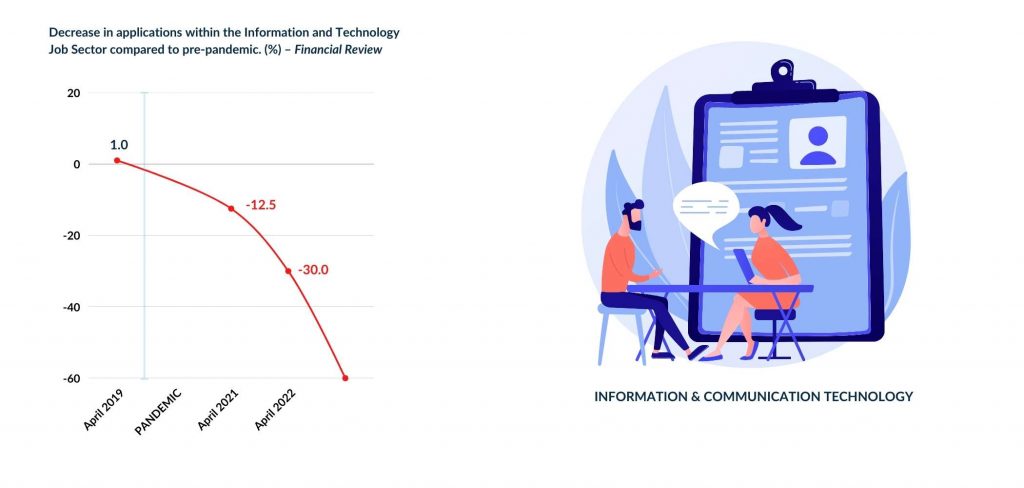Almost one-third of businesses in Australia are having a tough time finding the right staff and most have attributed their struggles to applicants not having the required skills (59 per cent) and a lack of applicants (79 per cent).
Despite the skills shortage not being industry-specific, the technology and specialised trade roles face a structural shortage on a global level, making competing for workers within Australia challenging and frustrating for companies and businesses in the industry.
Before the Covid-19 lockdown in 2020, almost 400,000 international students and 250,000 working holidaymakers were employed in Australia each year. That number dropped significantly when the country shut its borders in response to the pandemic and asked temporary residents to leave, creating a hole within the IT space and vacant positions.

With skills so scarce within the market, the question is, how does the IT Industry navigate the current skills shortage here in Australia?
Following the latest Skills Summit, 2022 the topic surrounding altering immigration laws to fill the skills shortage gap. Business leaders at the government’s summit put a large emphasis on the idea to support the decision to raise migration levels. Chief executive of the Australian Chamber of Commerce, Andrew McKellar said it was a “significant step forward.”
However, a blowout in visa processing times in Australia has left roughly a million prospective workers stuck in limbo, bringing businesses back to the drawing board on how best to navigate not having enough staff for their workloads.
Other than wage increases, businesses are trying alternative pathways to raise staff numbers by hiring people whose qualifications or experience are not recognised by mainstream recruiting processes. Businesses have been hiring remote overseas workers to bridge the gap, whilst others are seen to be hiring refugees with technology experience however this is not viable for many IT companies here within Australia needing and preferring in-house work `
With the time it takes to hire new talent having increased since the pandemic, it is still an employee’s market, meaning the best talent gets snapped up quickly by organisations who are ready to go or those willing to use a recruitment agency. According to Dynamic Business Network, a hiring activity report outlined the sectors demonstrating the highest hiring activity in 2021. Across all industries, operations, sales, and IT roles are the priority positions to fill. This alongside the skills shortage puts a dampener on the hiring process when you do not have the applicants or support.
With no end in sight when it comes to the current skills shortage, IT companies are turning to recruiters to help them find the right candidate with the skillsets required for the role. As a recruiter, knowing what causes skill shortages, screening, and qualifying candidates, and taking the challenging work of finding the right fit, gives you a leg up and puts you in a better position when it comes to filling the role you have available.
When it comes to navigating the current skills shortage crisis as an IT business, you can either sit on the fence and wait out the pending migration changes or look to gain support through the process of qualifying candidates already on file with recruiters. The question businesses need to ask themselves are; how important is it that I fill this role, and how long am I willing to wait?



